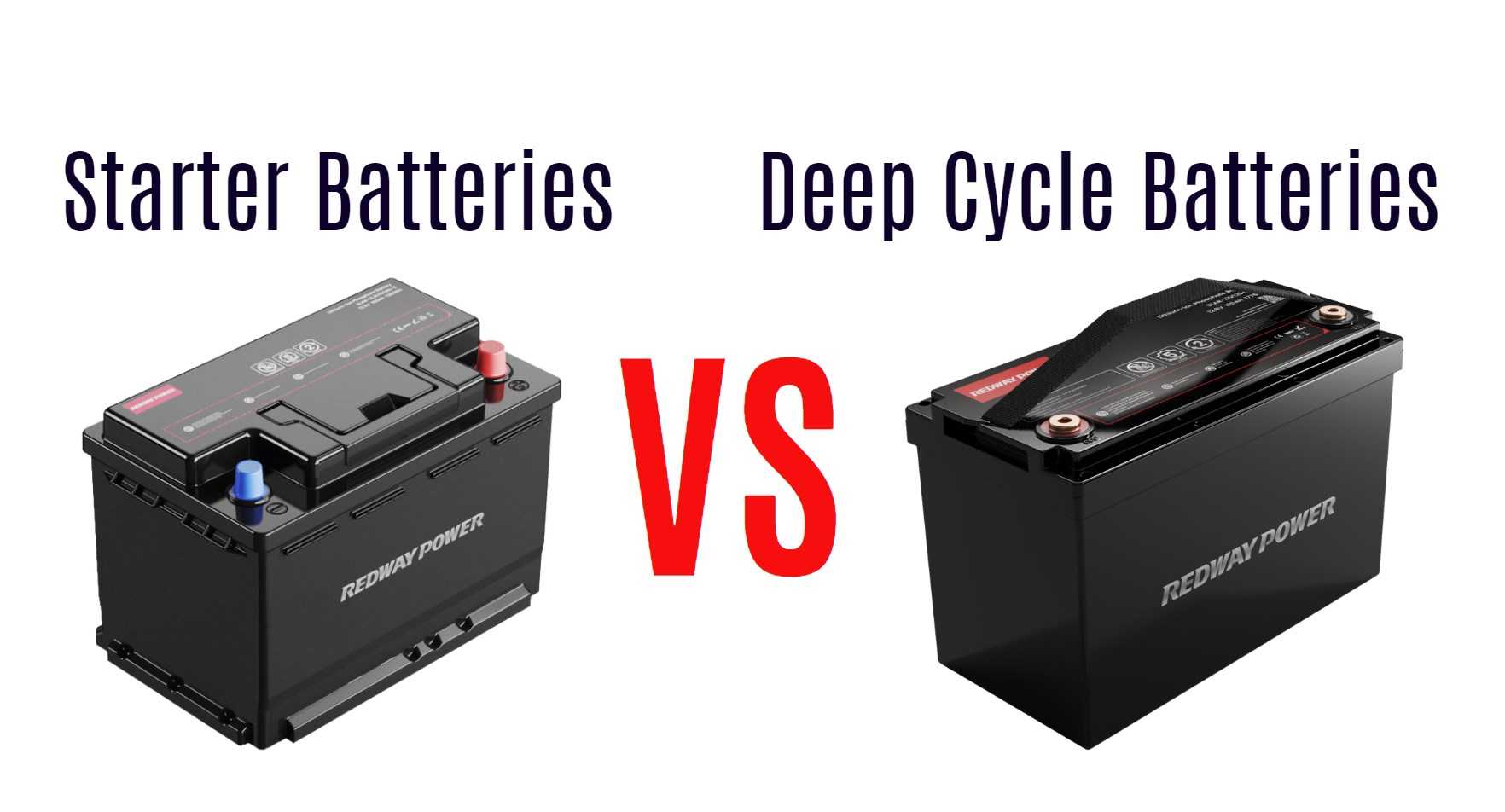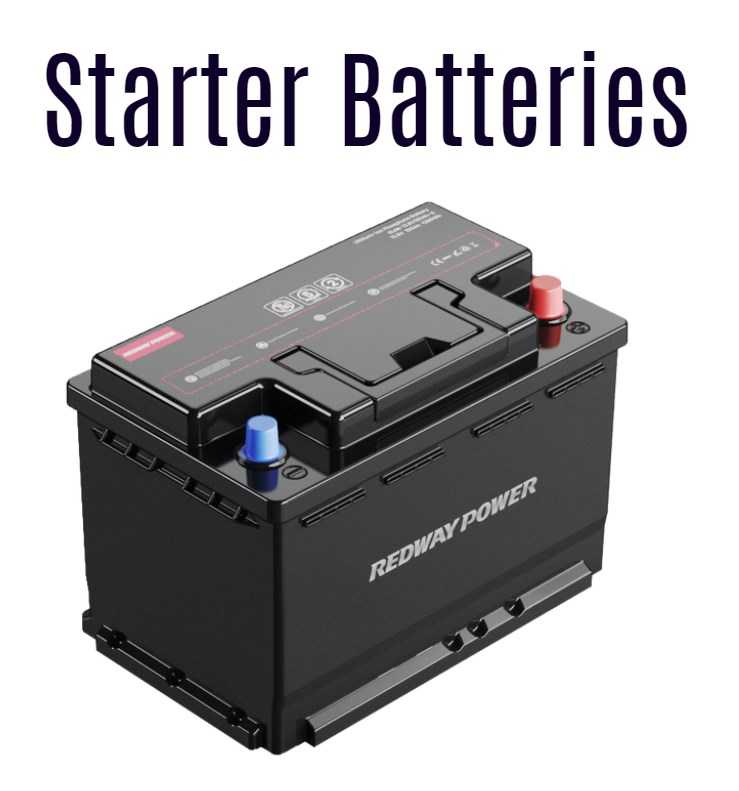We delve into the critical distinctions between starter batteries and deep cycle batteries, empowering you to make informed decisions based on your energy needs.
What is a Starter Battery?
A starter battery, also referred to as a vehicle battery, serves a crucial role in starting engines with a powerful surge of electricity. Typically, these batteries are designed to provide a short burst of energy to crank the engine, after which the alternator takes over to recharge the battery. The energy discharge during engine start-up typically only depletes the battery by a minimal 1% to 3%. This minimal discharge ensures that starter batteries maintain their capacity for frequent and reliable engine starts over an extended period.
Ideal Uses for Starter Batteries
Starter batteries are ideal for:
Wholesale lithium golf cart batteries with 10-year life? Check here.
- Gasoline-powered vehicles
- Motorcycles
- Small engines where quick bursts of power are essential
Redway Power Lithium Starter Batteries: Innovation in Starting Power
At [Your Company Name], we offer Redway Power Lithium Starter Batteries, revolutionizing vehicle power solutions with advanced lithium technology. Unlike traditional lead-acid batteries, our lithium starters deliver superior performance and durability. They are specifically engineered to provide maximum cranking power with minimal weight, ensuring reliable starts even in harsh conditions.
Understanding Deep Cycle Batteries
Unlike starter batteries, deep cycle batteries are designed to provide sustained power output over extended periods. These batteries are ideal for applications requiring continuous and reliable energy, such as marine, solar storage, and home backup systems. Deep cycle batteries can withstand frequent deep discharges without significantly impacting their lifespan, making them a reliable choice for off-grid and renewable energy solutions.
Want OEM lithium forklift batteries at wholesale prices? Check here.
Benefits of Redway Power Lithium Deep Cycle Batteries
Our Redway Power Lithium Deep Cycle Batteries:
- Offer significantly longer cycle life (2000–5000 cycles)
- Allow deep discharges up to 10% of capacity without damage
- Provide up to twice the usable power compared to conventional lead-acid batteries
- Weigh half as much, making them ideal for applications where weight savings are critical
Moreover, our lithium iron phosphate (LiFePO4) chemistry ensures exceptional efficiency in storing solar energy, achieving up to 96% energy utilization compared to 76% with sealed lead-acid batteries.
Applications of Redway Power Lithium Deep Cycle Batteries
We specialize in large capacity 12 Volt lithium batteries ranging from 10 amp-hours to 170 amp-hours and beyond. Our batteries are tailored for:
- Solar energy storage
- Marine and RV applications
- Home backup power systems
Dual Purpose Batteries: Versatility and Performance
Dual purpose batteries combine the characteristics of both starter and deep cycle batteries, offering flexibility and high performance. These batteries are designed to provide both cranking amps for engine starting and deep cycle capabilities for continuous power supply.
Redway Power Lithium Dual Purpose Batteries
Our dual purpose batteries, such as the 12V 135Ah model, deliver:
- 135 amp-hours of deep cycle capacity
- 1000 cold cranking amps for reliable engine starting
- Versatility for various applications including marine, RVs, and off-grid solar systems
Conclusion
Choosing the right battery—whether it’s for starting your vehicle reliably or powering your off-grid retreat—is crucial. We offer a range of innovative solutions, including Redway Power Lithium Batteries, designed to exceed your expectations in performance, longevity, and efficiency. Explore our selection today to find the perfect battery for your unique needs.







